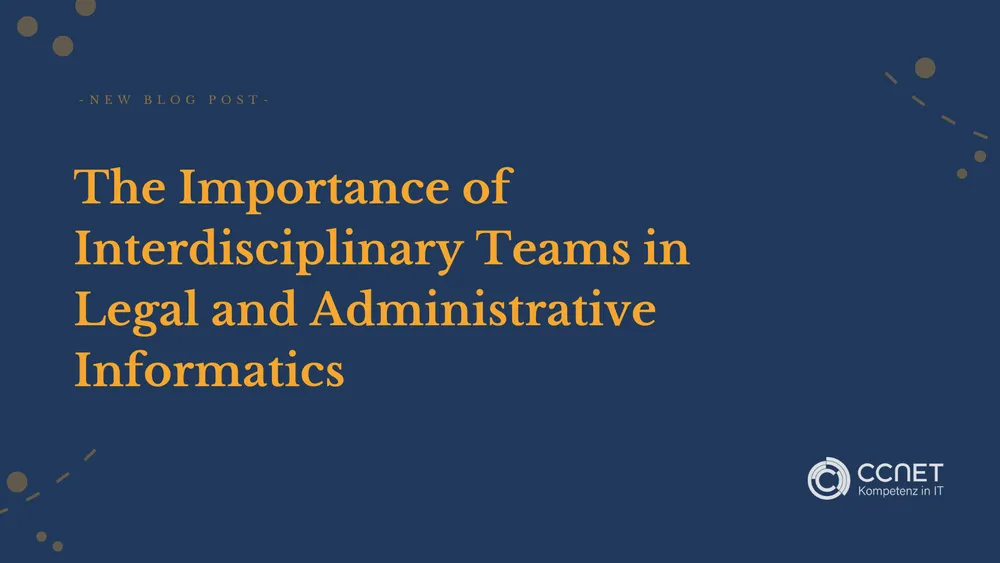
CCNet
Jul 17, 2024 • 3 min read

Laws Compatible with Automation: Necessity and Design for an Efficient Future
In an increasingly digitalized world, the creation of vital automation-compatible laws is crucial to increase the efficiency of administrative actions and ensure fair legal application. This blog post examines what automation-compatible laws are, why they are necessary, and how they can be effectively designed to meet the demands of modern society tomorrow. Automation-compatible laws must be flexible, clearly worded, and structured in a way that allows digital systems to interpret and apply them to make legal decisions efficiently and accurately.
If you have any further questions, contact us: contact
What Are Automation-Compatible Laws?
Automation-compatible laws are legal norms designed to be efficiently interpreted and applied by automated systems, such as Artificial Intelligence (AI). These laws must be clear, unambiguous, and free of vague legal terms to enable precise machine processing. The primary goals are to reduce human intervention, increase procedural efficiency, and minimize interpretative errors. This approach helps increase legal certainty and strengthen the legal framework for using automation technologies.
Why Are They Necessary?
The necessity for automation-compatible laws arises from several reasons:
- Increased Efficiency: Automated systems can perform certain administrative tasks faster and more cost-effectively than human operators.
- Consistency and Fairness: By reducing human discretion, automation-compatible laws can lead to more consistent and fair decisions.
- Accessibility and Transparency: Automated processes can improve access to administrative services and increase traceability. They also contribute to providing citizens with clearer insight into how the administration operates, thus strengthening trust in the system.
Designing Automation-Compatible Laws
The design of automation-compatible laws requires close collaboration between legal professionals, legislators, and technology experts. The following aspects are crucial:
- Clear and Unambiguous Language: Laws must be worded in a way that enables machine understanding without leaving room for ambiguous interpretations.
- Standardization of Legal Terms: By using standardized terms that are mapped into so-called ontologies, laws can be processed more efficiently by machines.
- Consideration of Technical Capabilities: Laws should be designed to consider the technical possibilities and limitations of current automation technologies.
- Interdisciplinary Development Teams: Involving computer scientists and other technical experts in the legislative process is essential to ensure technical feasibility from the start. Effective collaboration among these professionals can ensure that laws are not only legally correct but also technically feasible and practical.
International Examples
Countries like Denmark have already made significant progress in implementing automation-compatible laws. Through legislative measures and establishing specialized oversight bodies, it is ensured that new laws meet the standards of digitalization, representing a forward-thinking approach. These concerted efforts are crucial for creating and maintaining a modern legal infrastructure that effectively addresses the evolving complexities of contemporary society.
Conclusion
The development and implementation of automation-compatible laws are complex but essential steps in modernizing public administration. They offer significant benefits for the efficiency, fairness, and accessibility of the legal system. A comprehensive and thoughtful approach is required for successful implementation, integrating and considering both technical and legal expertise, paving the way for a more efficient and equitable future.
Would you like to know more about how different countries implement automation-compatible laws, or are you interested in specific challenges and solutions in this area?
What are automation-friendly laws?
Automation-ready laws are legal norms formulated in such a way that they can be efficiently interpreted and applied by automated systems, such as artificial intelligence (AI). They must be clear, unambiguous and free of vague terms to enable precise machine processing.
Why are automation-compatible laws necessary?
Automation-compatible laws increase efficiency by completing tasks faster and more cost-effectively. They also ensure more consistent and fair decisions and improve access to and transparency of public administration processes.
How do automation-ready laws affect fairness in administrative action?
By reducing human discretion, automation-friendly laws can lead to more consistent and fair decisions by reducing the possibility of interpretation errors.
How should automation-compatible laws be designed?
Laws should be written in clear and unambiguous language, use standardised terms and take into account the technical capabilities of automation technologies. Close cooperation between lawyers and technical experts is crucial to ensure feasibility.
Are there any international examples of automation-compatible laws?
In Denmark, significant progress has already been made in implementing automation-compatible laws by establishing legislative measures and specialised supervisory bodies ( ) to meet digital standards.


